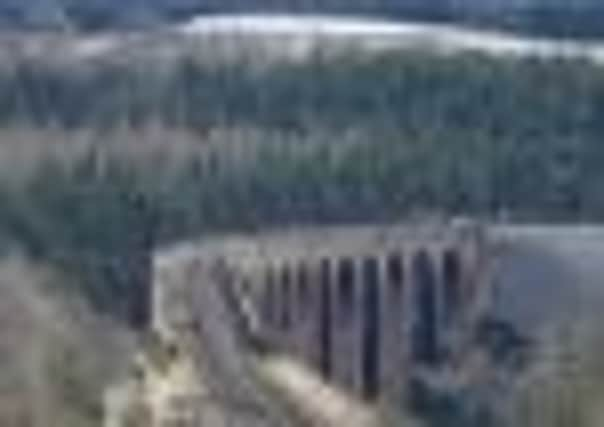Hikers dicing with death on scenic Highland railways


Trespassers caught crossing lines increased by more than 50 per cent in some areas last year, according to British Transport Police (BTP).
Incidents included two German fishermen being hit by a train as they walked along the railway near Rannoch in Perthshire.
Advertisement
Hide AdAdvertisement
Hide AdThere have also been several near misses, with a train being forced to stop to avoid colliding with a group of hillwalkers in Glen Lochy, in Argyll.
BTP and rail unions insist tracks should be no-go areas, but one walkers’ group claimed it was “reasonable” for people to step over lines if they were miles from the nearest crossing point.
BTP said the number of people caught trespassing on lines in the Perth area had increased from 18 in 2011 to 29 last year, while the total for the Inverness area had gone up from 39 to 60. Around Aberdeen, the figure rose by two to 40, and by one to 24 around Dundee.
Perth-based Constable Mike Tunney, of BTP, said walkers who crossed lines did not think they were committing a crime, despite facing a fine of up to £1,000: “Hillwalking is becoming so popular and the general perception is people are in a remote area with few trains and there is nothing wrong with doing it.
“They may include tourists from other countries where it is not illegal.”
The two visiting Germans hit by a train last August were walking along the Glasgow-Fort William line on their way back from a fishing trip, as they had done for years.
Paul Kolarczyk, 52, suffered serious leg injuries, while his father, Gerhard, 87, had cuts and bruises to his head.
Gerhard fell into a 5ft-deep drain beside the track after his son shouted from behind that a train was coming. It is thought the train snagged Paul’s rucksack and flung him from the track.
Advertisement
Hide AdAdvertisement
Hide AdHis brother Gary was on the train, en route to meet the pair at Rannoch station during their annual holiday in Scotland. He said his father had been “just dazed”, but added: “I don’t think he realised just how serious it all was.”
Tunney said another troublespot was on the Glasgow-Oban line beside a car park on the A85 in Glen Lochy, which is popular with hillwalkers ascending Ben Lui and nearby Munros. The official route is via a culvert under the line and a river, but this is awkward because it involves bending double.
Tunney said: “It is about a mile to the nearest footbridge and 99 per cent of people just walk across the line. However, the line of sight is not brilliant, and walkers may be returning tired in poor light or darkness. In October, a train driver had to stop because of a group of six to eight hillwalkers crossing the line ahead.”
BTP is now discussing possible solutions – such as re-siting a bridge – with bodies such as Network Rail and the Forestry Commission.
Other problem areas include beside Loch Awe, further west along the Oban line, while rail enthusiasts taking photographs of trains have been caught on the Culloden viaduct, east of Inverness.
Train drivers’ union Aslef said rail tracks should be no-go areas for walkers.
Scottish secretary Kevin Lindsay said: “The railway is a dangerous place and people should not be accessing it. Hillwalkers and fishermen should not be endangering their lives and those of people on trains.”
However, Ramblers Scotland claimed there was nothing wrong with walking across lines where there was no feasible alternative. Campaigns and policy manager Helen Todd said: “If you are not interfering with the operation of the railway, it is a reasonable thing to cross a railway line miles between crossing points. I am not saying it is a statutory right, but it should not be a criminal offence.
Advertisement
Hide AdAdvertisement
Hide Ad“Some crossings are ancient rights of way which pre-date the railway. The only way to stop this is to put in proper crossing points or erect massive fences beside the line.”
The Mountaineering Council of Scotland said using the culvert in Glen Lochy was more hazardous than crossing the line.
Chief officer David Gibson said: “The access route via the culvert proposed as an alternative to crossing the line is not in popular use because it is positively dangerous – it is slippery, usually flooded and water levels are uncontrolled and can vary significantly.”
A Network Rail spokesman said: “Trespassing on the railway is a criminal offence and can prove to be a deadly mistake.
“Not all trains run to a published timetable. Even lines which seem like they should be quiet between passenger services may actually be in use by freight or engineering trains.
“Walkers could easily find themselves in the path of a train and may be seriously injured or killed.”
Twitter: @AlastairDalton